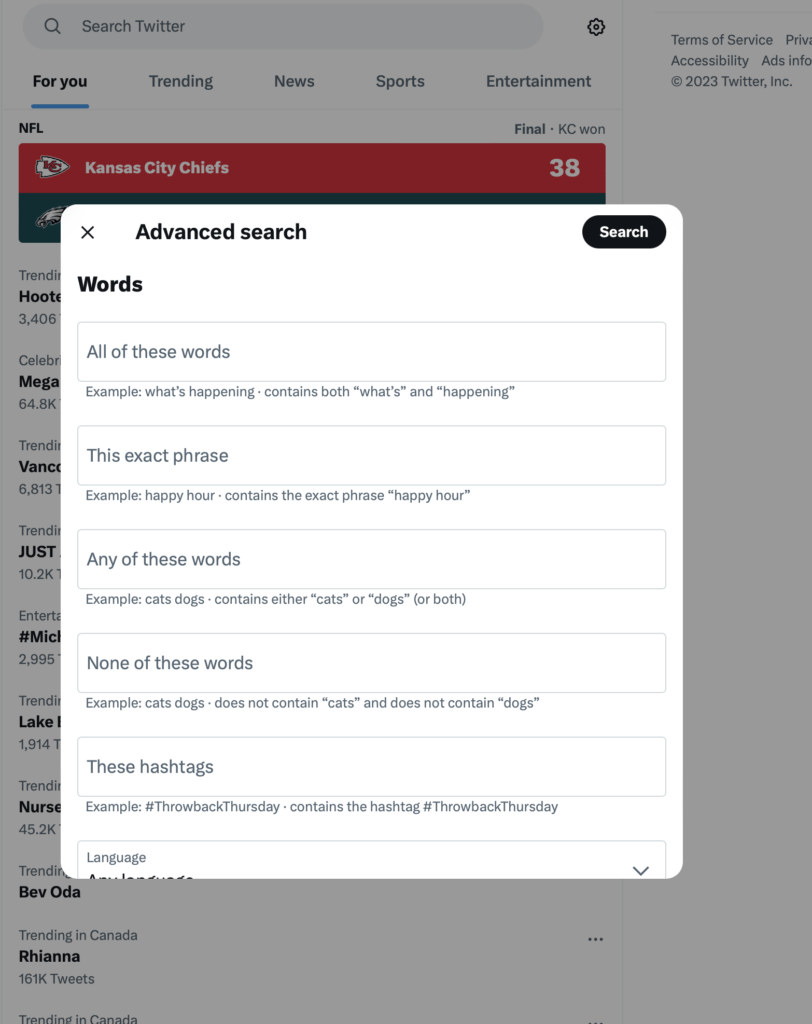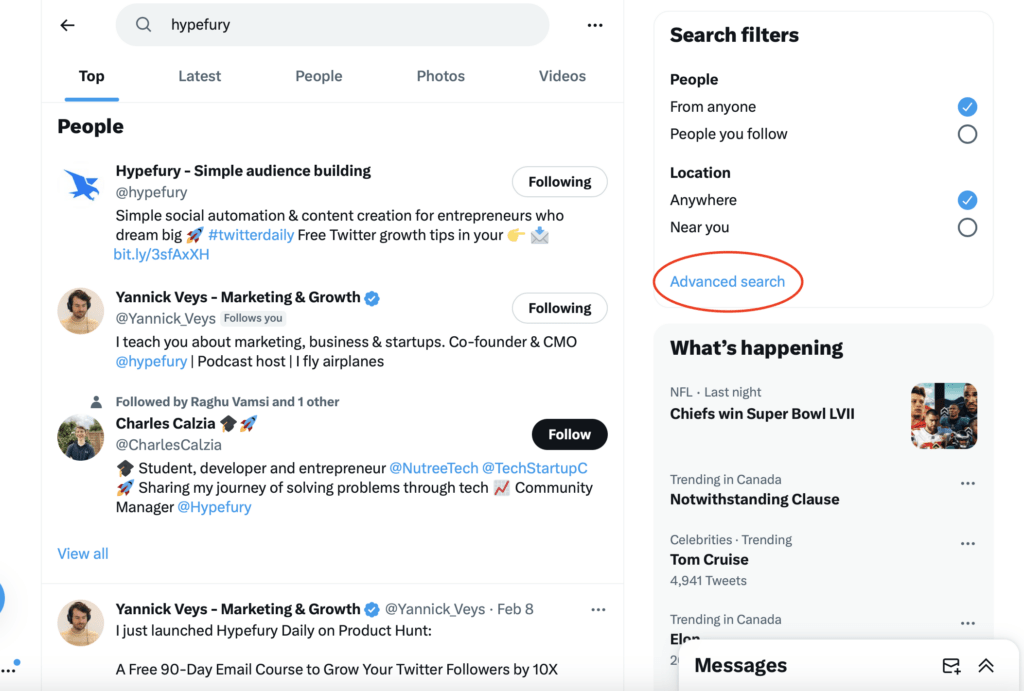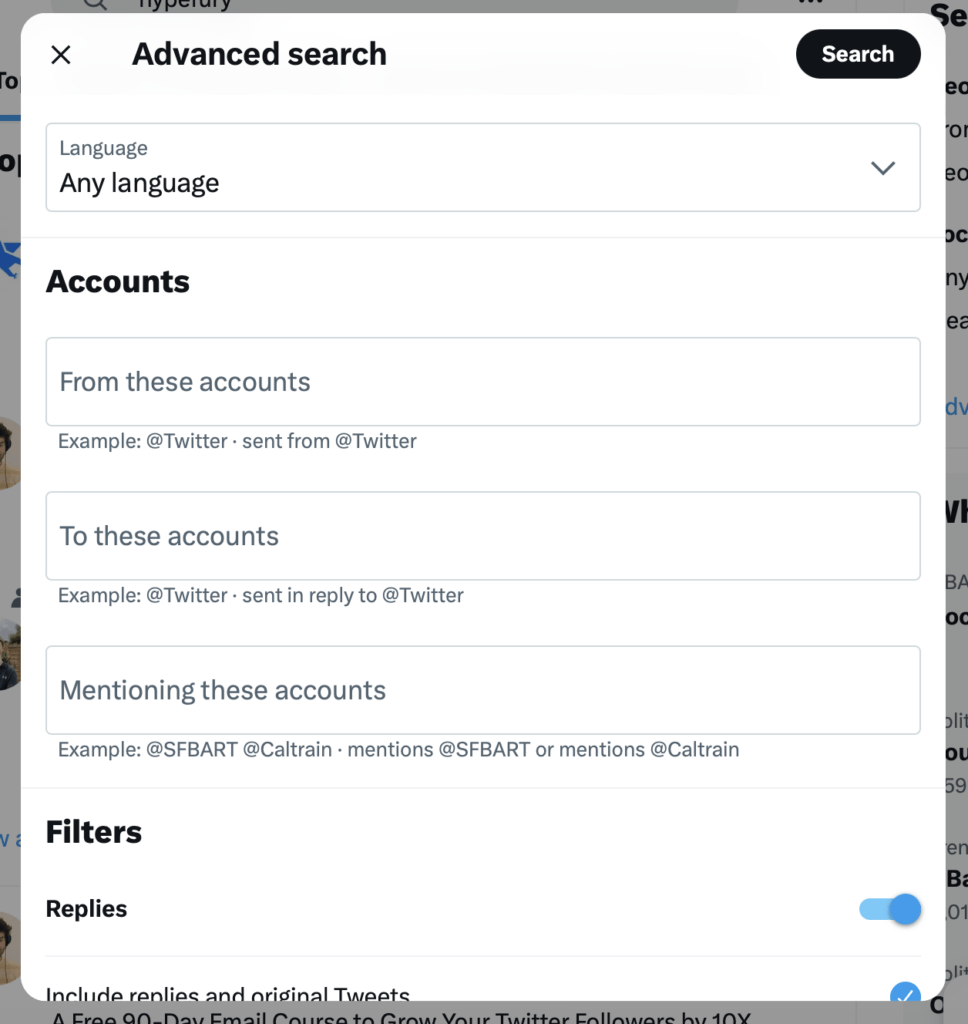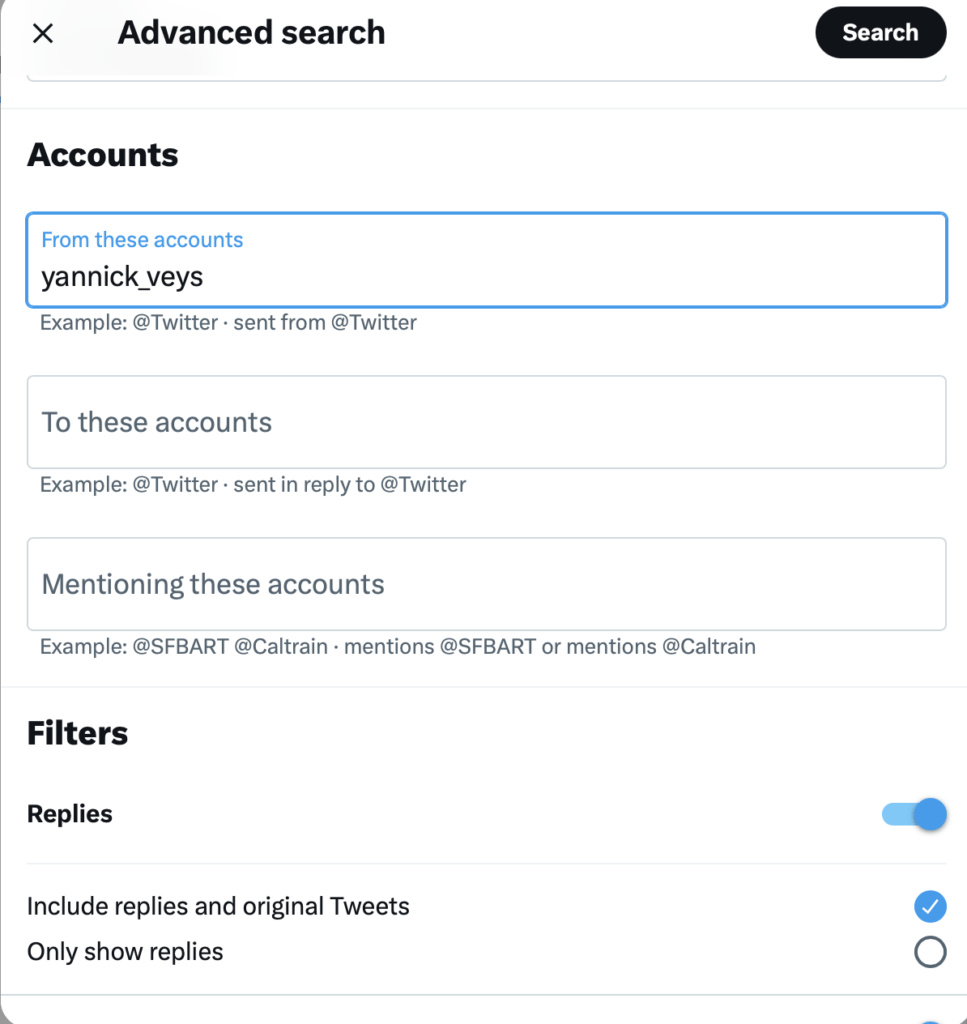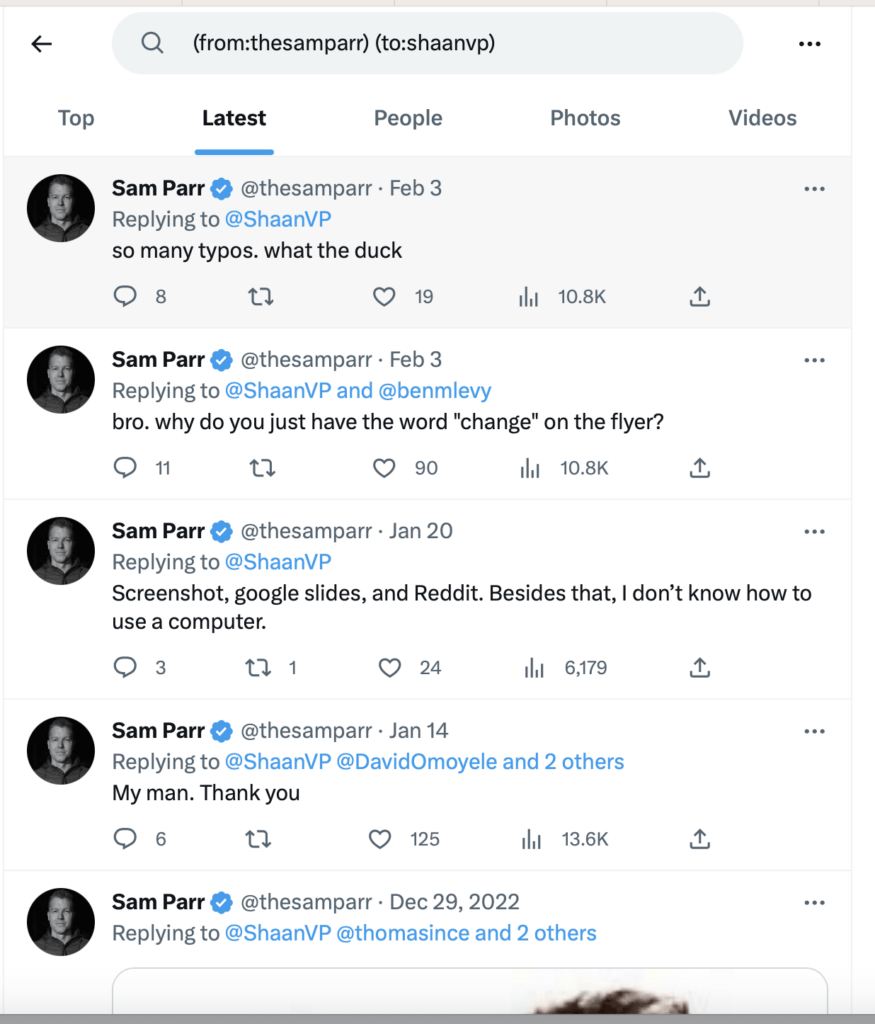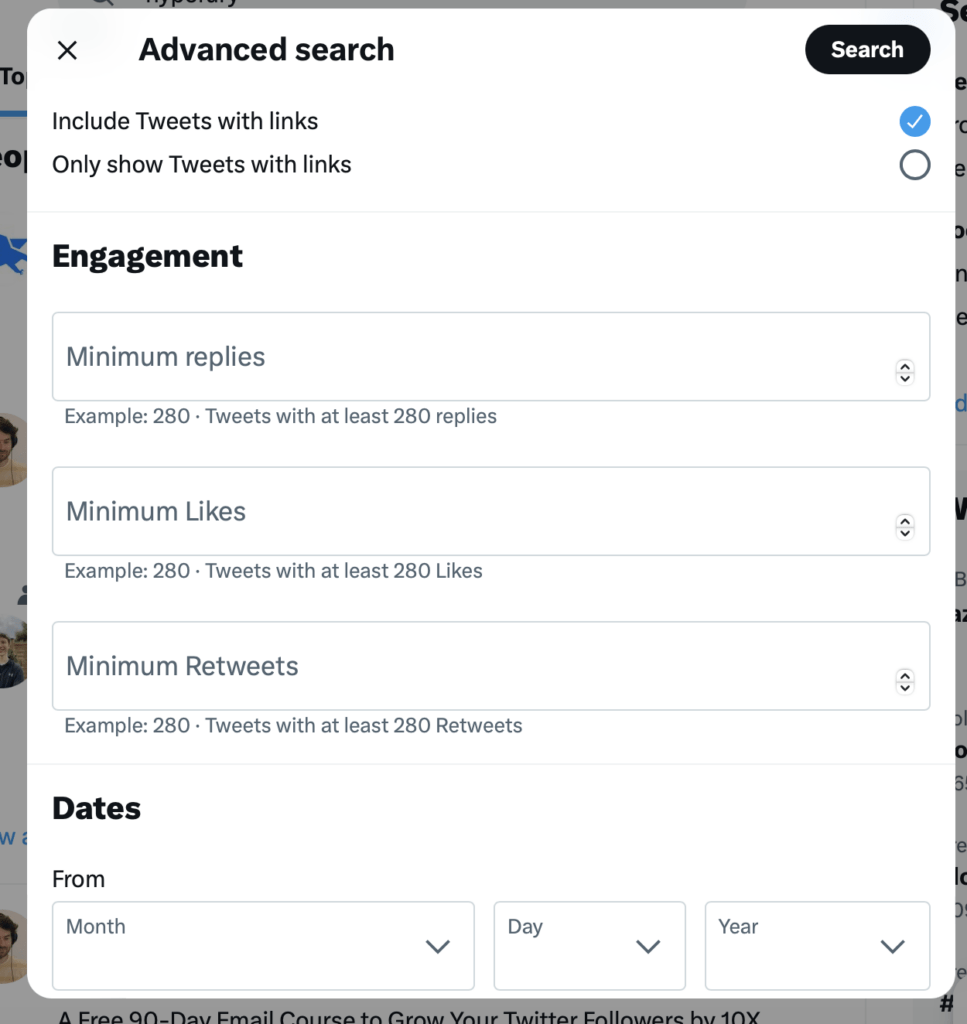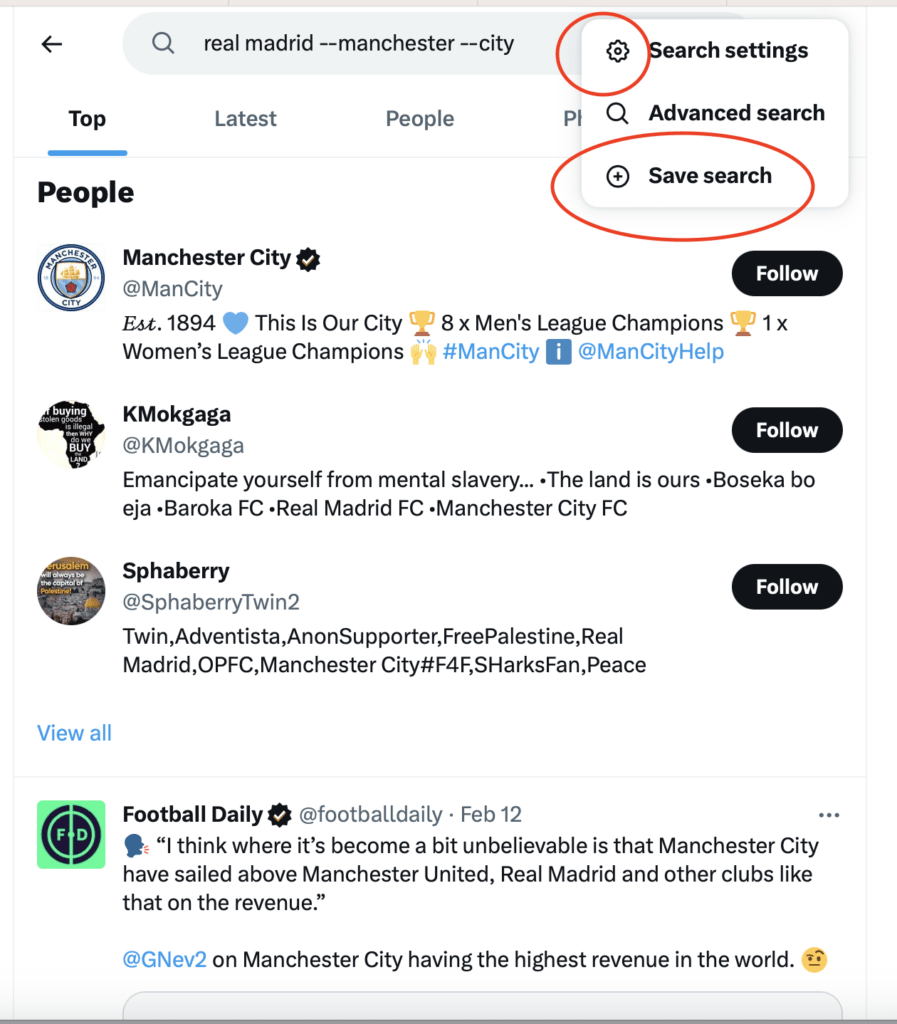Have you ever thought about how you search for Tweets on Twitter? Like many people, you are probably not using even 20% of the functionality of Twitter Search.
Why is that? Because you are sticking to the basics too much — namely, Twitter’s basic search function.
Just like Google, Twitter has more powerful ways to search for content than simply typing in word or phrases and hoping the algorithm will surface what you need.
Creators and brands who are using Twitter effectively should be leveraging Twitter Advanced Search to find deeper insights, connect better, and tailor content.
Table of Contents — Twitter Advanced Search
=> What is Twitter’s Advanced Search and how do I access it?
=> What’s the difference between Regular Search and Advanced Search
=> How to conduct an Advanced Search on Twitter on Desktop
=> Using Advanced Search on mobile
=> Using Advanced Search to engage with your audience
Twitter’s advanced search is a powerful and under-utilized tool that allows you to segment all kinds of queries — far beyond what you can do with a normal Twitter search.
Almost nobody uses this feature, which is why you can learn how to leverage it to your advantage when engaging on Twitter and growing your audience.
What is Twitter’s Advanced Search and how do I access it?
Twitter’s Advanced Search is simply a pop-up interface and a set of tools for refining your Twitter searches. People don’t tend to think about Twitter as a search engine. But there is arguably more personalized content to mine on Twitter than from all the billions of pages on Google — because tweets represent people’s unfiltered thoughts, feelings, and impressions far more than many web pages do.
Advanced search is important because it can literally cut down on 90% of your unfocused, imprecise time searching for things to do on Twitter, or searching for ways to engage on Twitter using the Twitter interface or a tool like Hypefury.
What is the difference between regular search and Advanced Search?
Twitter basic search or ‘plain’ search is probably what you already do all the time on Twitter — filtering Tweets from the firehose of the Twitter timeline into particular tweets around a specific topic, usually guided by keywords. It’s like searching a few words in Google.
Twitter Advanced Search is actually accessed in two different ways, and it can be a slightly different experience on desktop vs. mobile.
How to conduct an Advanced Search on Twitter on desktop
On a desktop browser, you can make a regular search and then navigate to the Advanced Search filter that shows up.
Then — you have access to the Advanced Search modal, where you can simply type your Advanced Search into the various flavors. Remember to pay attention to which genre of search you are typing your words into. They can look quite similar.
All of these words
‘All of these words’ will search for phrases that combine all the terms — not necessarily the exact phrase (see below) — but some combination of all of those words.
This exact phrase
typing words into ‘This exact phrase’ will search for only tweets that match the entire phrase — not any of the words in isolation or in an order that doesn’t match the exact phrasing of your query.
Any of these words
Any of these words sounds very similar to ‘all of these words’ but there is a key distinction. ‘Any of these words’ will search for the words and return tweets that match at least one of the words — it’s almost like doing a bunch of parallel searches for one word each, rather than searching for an overall keyword phrase.
None of these words
Just as you’d expect, this one conducts a search that includes ‘none of these words’. Honestly, we find this one not particularly useful in isolation, except maybe if you something is annoying you and you want to search “all of Twitter except the current thing that’s happening today”. It’s a pretty broad search, still, to search for ‘everything except these few words’. Still, you may find use for it to conduct broad, wide searches that mute a few topics you don’t want to hear about.
These hashtags
These hashtags is something you can use to type in some words and track tweets that specifically have those terms included as hashtags in the tweet. This is helpful if certain hashtags tend to be associated with a certain topic, theme, or meme: like #copywriting.
Searching for hashtags is also popular for time-limited events like conferences, where people tend to be using hashtags like #CES2023 or #JPM2024 or #Coachella.
Relative to five or ten years ago, people don’t tend to classify all their tweets with hashtag accompaniments any more, so use this for specific types of searches and not as a replacement for regular Advanced keyword searches.
Language and Accounts
You can search for tweets in a specific language — note that this might be helpful if you are working in a language other than English and want to filter for a specific language.
But the next big feature on the Advanced Search interface is Advanced Search by Accounts.
You already probably have some familiarity with finding a person on the basic Twitter interface and tapping their profile, navigating to their page and then clicking on either their Tweets or Tweets and Replies.
Well, for one thing Advanced Search is just a little faster and cleaner, and offers you more flexibility than Basic Search when it comes to filtering by someone else’ account.
The search…
The result…
That’s great — but if you wanted to search not just for all the tweets from someone — but all the tweets from a specific person to another person.
Here’s a search for only those tweets that are from Sam Parr to Shaan Puri. Let’s see what happens.
Boom… a very specific set of tweets that are filtered down between two people. You could search the other way as well, from Shaan to Sam.
Searching by engagement
You can search by engagement, which is often helpful. Hypefury is a great tool for seeing which tweets have been doing really well, but sometimes you want to be very precise. You can look for tweets with a certain amount of replies, Likes or retweets to see which tweets have really performed well in the past. This another helpful filter to actually help you find the tweets you want.
Filtering by date
Using advanced search on mobile
Twitter unfortunately doesn’t have the same advanced search interface on the mobile app or mobile web, so you will want to use ‘operators’ — really, just small modifications and helper words, to help simulate the same kinds of searches that Advanced Search lets you do through an interface.
Here are some the ways that you can simply type what you want to search into the search bar using key helper words and characters to modify your search.
(Hint: this actually also does work on desktop, so eventually you might learn the keyboard shortcuts well enough to even skip the Advanced Search interface in the first place!)
the OR operator
You can use the phrase OR to search for one term or another.
Search for wordpress themes OR php laravel tutorials to search either of these terms if you believe tweets that related to both of these keywords are relevant to your research.
The quotation marks (or “inverted commas” in the UK)
Just like on Google, you can use quotation marks or inverted commas to search for the exact phrase — not just one or another word within a phrase but the whole shebang.
Like if you want to search “Holy Roman Empire” but not Holy, Roman or Empire.
The minus sign or dash
The minus sign or dash allows you to exclude a particular term.
Search for copywriting services but exclude email with “copywriting -email”
filter:media
You can look for tweets that have media like images of videos attached to them and filter out any tweets that don’t. Just append filter:media to queries and you will be able to see media-rich content and only media-rich content right away.
using @username
You probably know that if you search for a username in basic search, and you want to search specifically for a user, you can simply search for that username with ‘@’ attached.
| from:@username | Only show tweets from the target user |
| -from:@username | Filter out tweets from the target user |
| to:@username | Only show tweets sent to the target user |
| -to:@username | Filter out tweets sent to the target user |
With these modifiers, you can start to find tweets sent to your favorite influencer that you are looking to build a relationship with, or look for the history of all tweets FROM Elon Musk ABOUT dogecoin. (‘from:@elonmusk dogecoin’).
But seriously, don’t just look for all of Elon’s quotes about dogecoin, use it to home in on what the users in your vertical are talking bout.
min_retweets:
With the min_retweets search, you can access tweets that are
20 ways to use Twitter advanced search
setting minimum engagement levels
finding tweets in a date range
Keywords: You can search for tweets containing specific keywords or phrases.
Hashtags: You can search for tweets that contain a specific hashtag.
Usernames: You can search for tweets from a specific Twitter account.
Dates: You can search for tweets within a specific date range.
Location: You can search for tweets from a specific location.
Attitude: You can search for tweets with a specific sentiment, such as positive or negative.
To access Twitter’s advanced search, go to twitter.com/search-advanced. From there, you can enter the criteria you want to search for and find tweets that match your criteria.
Using Advanced Search to engage with your audience
Monitor customer feedback and respond to their tweets
This is probably the biggest, most obvious one — but if you sell a product or service and you are starting to get some traction — people are going to talk about you on Twitter. Use advanced search to monitor your brand’s name, product names, and any relevant hashtags to see what people are saying about your business. Responding to customer feedback on Twitter shows that you value their opinion and are committed to providing excellent customer service.
Look for trends in topics that are popular with your audience
Use advanced search to see what topics are currently trending among your followers and customers. This information can give you insights into what your audience is interested in, and help you create content that resonates with them. By staying on top of the latest trends, you can demonstrate that you are an expert in your field and an authority in your industry.
Aggregate a tweet thread around a particular topic
Using advanced search, you can find tweets that are related to a specific topic and create a tweet thread. A tweet thread is a series of tweets that are connected and tell a story or share information. This is a great way to share information and engage with your followers in a meaningful way.
Fill up your inspiration queue
Advanced search can be used to find tweet formats that are inspiring, sticky, popular, and viral. You can use this information to fill up your inspiration queue in Hypefury and queue up content to share with your followers. This can help keep your Twitter presence active and engaging.
Find people to reply to
Advanced search can also be used to find people to reply to. Use keywords, hashtags, and usernames to find tweets that are relevant to your business.
If you do enough Advanced searches, you will definitely start to see which people on Twitter are the most active in a certain topic, or have positioned themselves as a source of authority.
Responding to tweets can help you build relationships with your followers and show that you are an active and engaged member of the Twitter community.
You can use the Hypefury DM tool to respond directly within the Hypefury interface.
Saving searches
It’s a good idea to save your advanced search queries so you can easily access them in the future. This habit will save you time and effort, and ensure that your precious queries that you make over and over again are always at your fingertips.
Save searches by navigating to the Search settings gear and choosing Save Search:

